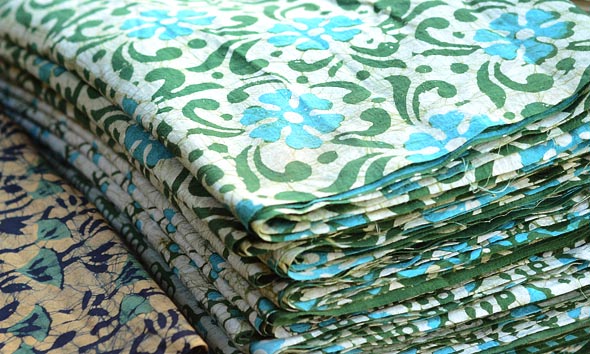
Introduction
India, a land of diverse cultural heritage, has been a cradle of rich and vibrant handicraft traditions. Gujarat, a state in western India, has been a hub for traditional crafts, and one of the remarkable art forms that originated from this region is “Batic.” Among the various regions in Gujarat, Mundra in Kutch is particularly famous for producing exquisite Batic artwork. In this article, we will delve into the fascinating world of Batic, exploring its history, production process, significance, and its impact on local communities.
Table of Contents
What is Batic?
Batic is a traditional fabric art that involves the creation of intricate patterns on cloth using wax-resist dyeing. The art form is believed to have originated in ancient Egypt or India and gradually spread to other parts of the world. In India, it holds a special place in the hearts of art lovers and cultural enthusiasts.
Historical Significance of Batic in Gujarat
Gujarat has a deep-rooted history of producing and trading textiles, and it has been a significant part of this legacy. The art form has been practiced in the region for centuries and has been associated with various rituals, festivals, and ceremonies.
The Batik making process requires several materials, including natural fabrics like cotton and silk, dyes made from organic sources, and wax for the resist technique.
Tools Used Artisans use various tools, such as “tjanting,” a tool to apply wax precisely, brushes, and blocks with intricate patterns.
Step-by-step Process
- Design Transfer: The design is first transferred onto the fabric using chalk or pencil.
- Wax Application: The artisan uses tjanting or brushes to apply hot wax on the areas that need to resist dye.
- First Dyeing: The fabric is then dipped into the lightest dye color and left to dry.
- Wax Removal: The wax is removed by boiling the fabric, revealing the areas where the wax protected the original color.
- Second Dyeing: The fabric is again dyed, and the process of waxing and dyeing is repeated for complex patterns.
- Final Wax Removal: The wax is removed again to reveal the completed Batic artwork.
Mundra, Kutch: The Batic Capital of Gujarat
Mundra, located in the Kutch region of Gujarat, has earned the title of being the Batik Capital of the state due to its exceptional Batik artisans and their skills. The town has become a thriving hub for Batik production, attracting both national and international attention. Mundra’s artisans have honed their expertise over generations, passing down the intricate techniques and artistic prowess of Batik creation. The town’s workshops offer tourists and art enthusiasts the opportunity to witness the mesmerizing process of Batik artistry. With its rich symbolism, vibrant natural dyes, and eco-friendly production methods, Mundra’s Batik art has garnered global appeal and recognition. The local community takes great pride in their craft and actively promotes and preserves the art form. The government’s initiatives further support the growth of the Batik industry in Mundra, ensuring the continuation of this age-old craft for generations to come. Mundra remains a shining beacon for traditional craftsmanship and a must-visit destination for those enamored with the world of Batik art.
Symbolism and Design Patterns in Batic:
Batik designs are not merely decorative but often carry deep symbolism and cultural significance. The motifs used in Batik art vary widely and can include elements such as flowers, birds, animals, and traditional geometric patterns. Each motif has a story and meaning behind it, connecting the artwork to the cultural heritage of the region and the community that practices this craft.
For example, floral patterns may symbolize growth, fertility, and prosperity. Birds might represent freedom, spirituality, or specific deities in Hindu mythology. Animals may be linked to traits like strength, courage, or wisdom. Traditional geometric patterns often convey a sense of harmony, balance, and unity with the cosmos.
These symbolic designs not only beautify the fabric but also serve as a way of passing down cultural knowledge and beliefs from one generation to another. They create a visual language that communicates the essence of the artisan’s community and cultural identity.
Popular Batic Motifs, Designs and Products

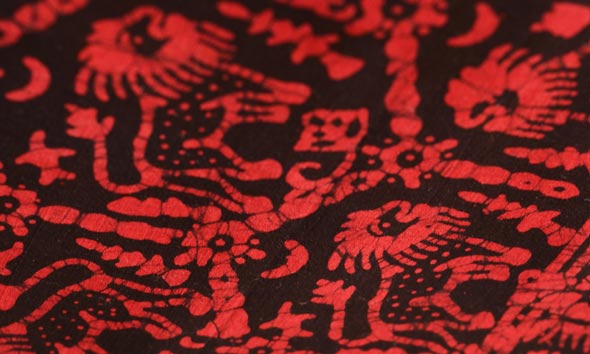
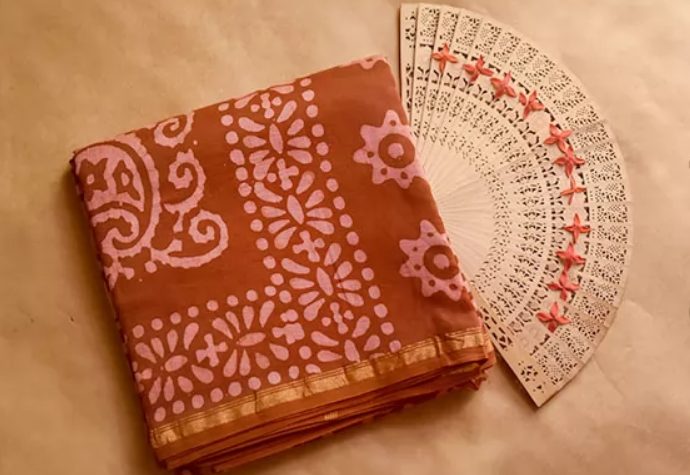
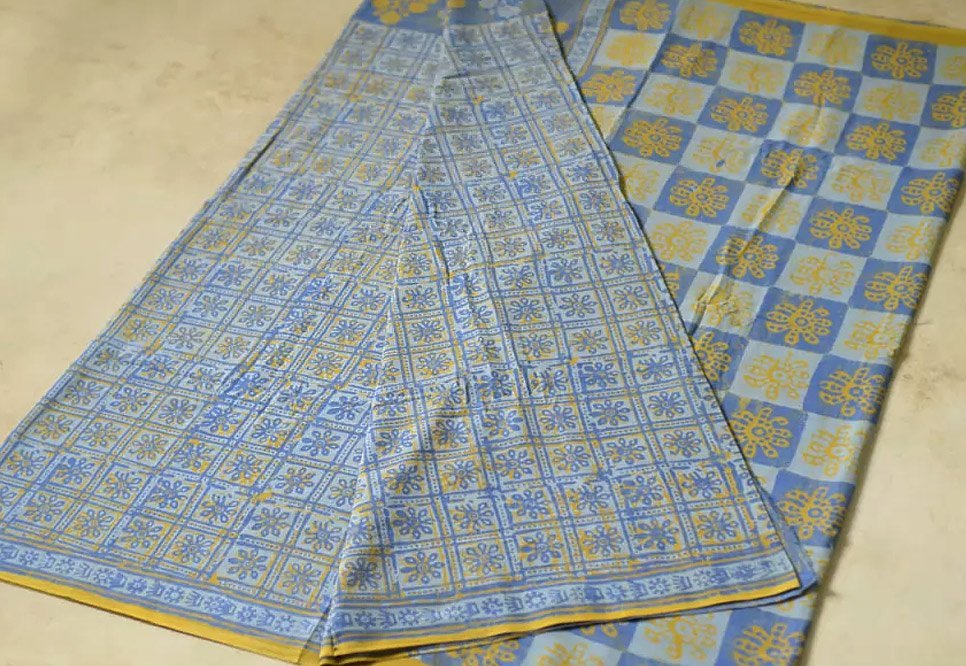
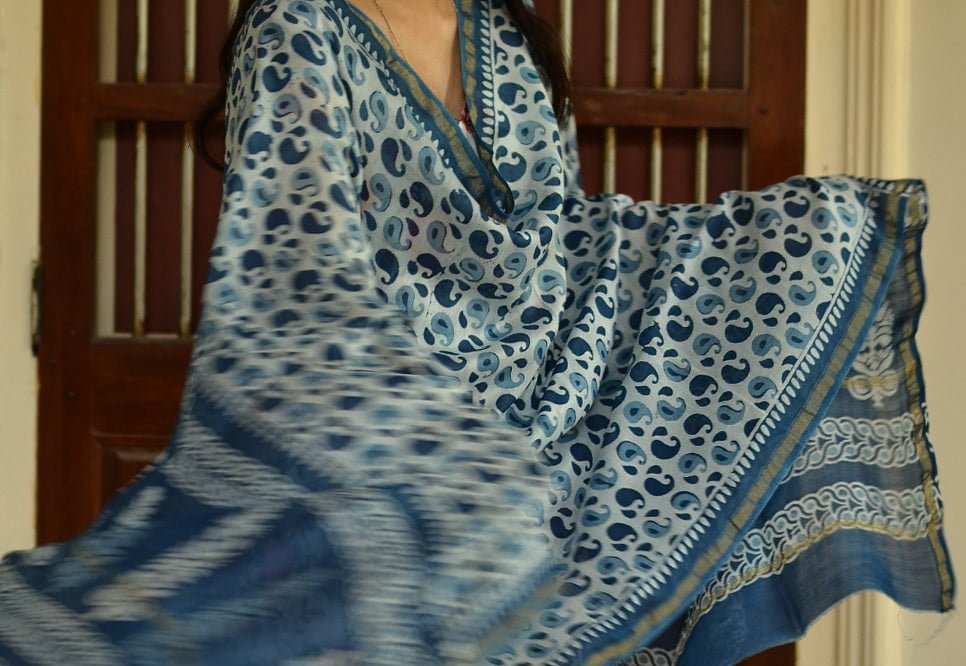
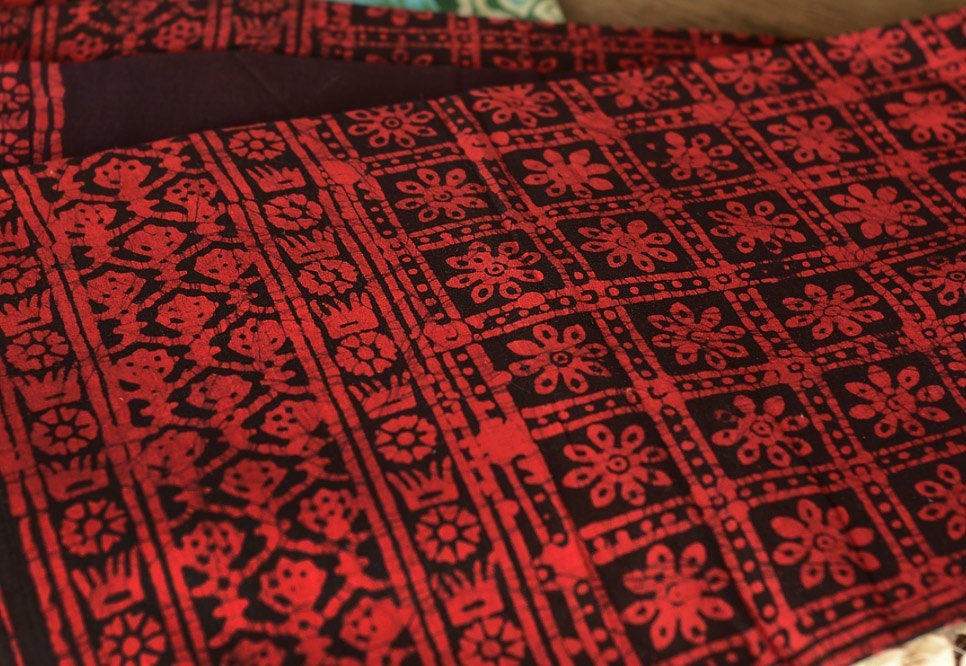
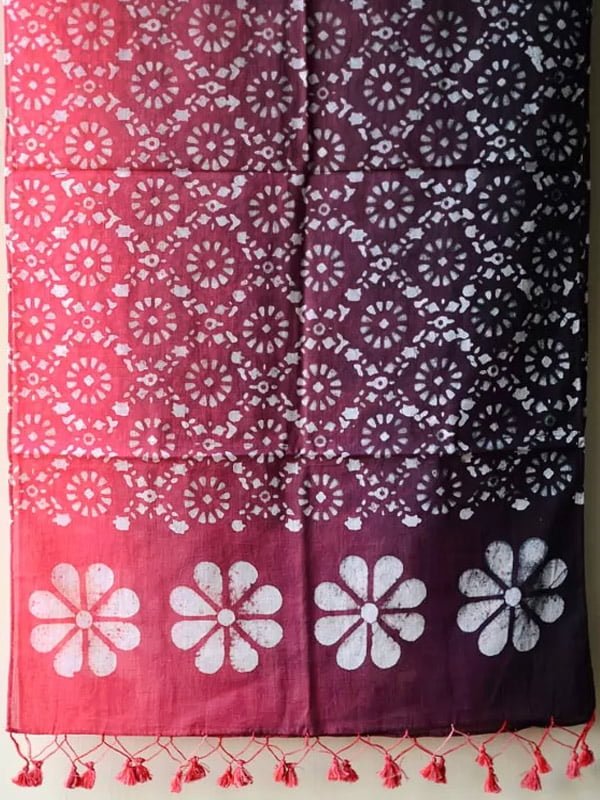
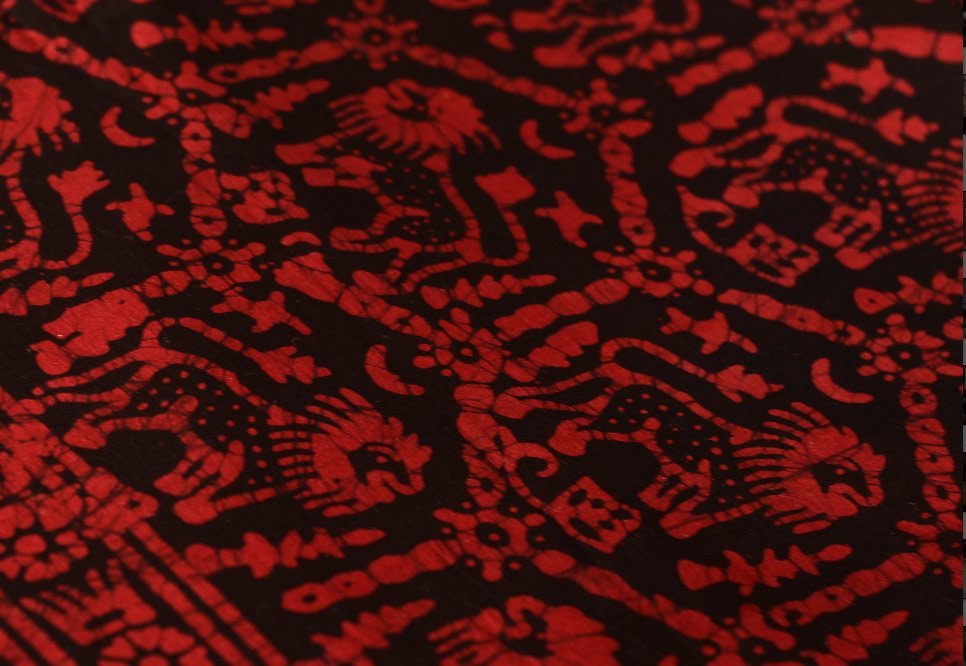
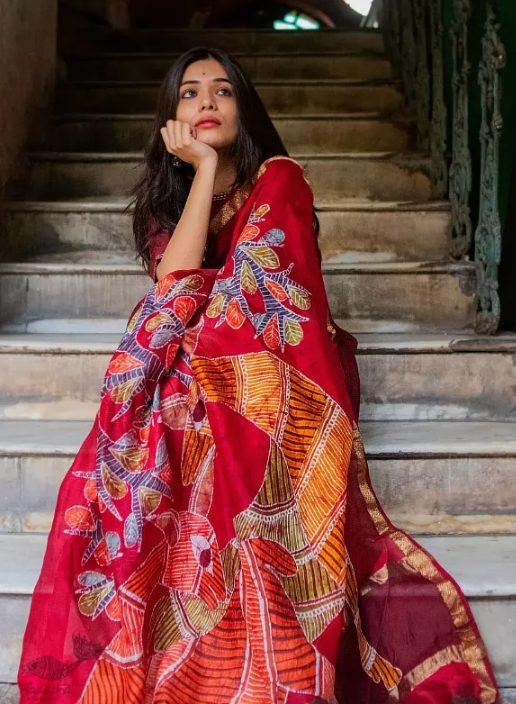
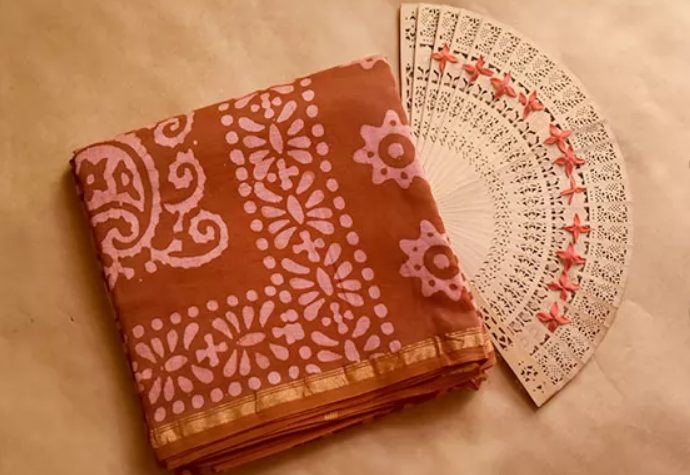
Photo/Gaatha
The Cultural Impact of Batic:
Batik has played a significant role in preserving and promoting traditional craftsmanship in Gujarat. The art form has been passed down through generations, and its continued practice has ensured the preservation of age-old dyeing and wax-resist techniques. By supporting local artisans and providing employment opportunities, Batik has helped sustain the traditional livelihoods of these skilled craftspeople.
Promotion of Local Artisans:
Batik has been a lifeline for many local artisans in Gujarat. The craft provides them with a means of earning a living while allowing them to pursue their passion for creativity. By supporting local artisans, consumers and organizations contribute to the preservation of this ancient craft and ensure that it continues to thrive in the modern era.
Preservation of Traditional Techniques:
The intricate dyeing and wax-resist techniques used in Batik have been passed down through generations. These techniques are not only artistic but also represent valuable cultural knowledge. The continued practice of Batik has become a driving force in preserving these traditional methods, safeguarding them from being lost or forgotten.
The Global Appeal of Batic:
Batik’s beauty, uniqueness, and cultural significance have not gone unnoticed on the international stage. With growing awareness of sustainable and handcrafted textiles, there has been an increased global demand for Batik products. This demand has allowed the art form to transcend regional borders and reach a diverse audience, fostering cultural exchange and appreciation.
Batic-A Sustainable Craft:
The production process of Batik involves the use of natural materials like cotton and silk, as well as organic dyes sourced from traditional sources. Additionally, the technique of resist dyeing requires minimal water consumption. As a result, Batik stands as an eco-friendly and sustainable craft, aligning with contemporary concerns for environmental preservation and responsible consumption.
Challenges Faced by Batic Artisans:
Despite its cultural significance and global appeal, Batik artisans face several challenges in the modern world. Market competition from mass-produced alternatives and fluctuations in demand can make it difficult for traditional artisans to sustain their livelihoods solely through Batik production.
Government Initiatives to Support Batic Artisans:
Recognizing the importance of preserving indigenous crafts like Batik, the Indian government has introduced various schemes and programs to support local artisans. These initiatives provide financial assistance, training, and marketing support to help artisans thrive in a competitive market.
The Role of Batic in Modern Fashion:
In recent years, Batik has found a place in contemporary fashion. Designers from around the world have embraced the unique fabric and incorporated it into modern clothing lines, thereby introducing this traditional craft to new audiences and keeping it relevant in today’s fashion industry.
Batic as a Form of Meditation:
The process of creating Batik art is intricate and repetitive, requiring immense focus and precision. As artisans meticulously apply wax and dye, they often experience a state of meditation. The rhythmic nature of the craft provides peace and solace to the artisans, making the act of creation not only artistic but also deeply meditative.
Batic and Tourism in Gujarat:
The allure of Batik has attracted tourists to Gujarat, particularly to the town of Mundra. Tourists visit Batik workshops to witness the beauty of this craft firsthand and to meet skilled artisans who passionately carry on the tradition. This influx of tourism not only benefits the local economy but also promotes cultural exchange and appreciation.
Batic: A Treasure of Indian Craftsmanship:
Batik stands as a testament to India’s rich cultural heritage and craftsmanship. It represents the resilience of traditional practices, passed down through generations, and deserves preservation and admiration. As people around the world recognize its value, Batik continues to enchant and inspire, ensuring its place as a cherished treasure of Indian handicrafts.
Conclusion
Batik from Mundra, Kutch, is not merely a fabric art form; it represents the indomitable spirit of Indian craftsmanship and the resilience of traditional practices. As the global demand for sustainable and unique handicrafts rises, Batik continues to enchant people worldwide with its intricate patterns and cultural significance. By supporting local artisans and recognizing the beauty of Batik, we contribute to the preservation of this age-old art for generations to come.
Also Read: India-Assam: Sualkuchi Weaving
FAQs
- Is Batik available in different colors? Yes, Batik can be found in a wide range of colors, depending on the dyes used in the process.
- How long does it take to create a Batik masterpiece? The time required to create a Batik artwork varies depending on its complexity, but it can take several days to weeks.
- Are there any specific traditional occasions where Batik is used? Batik is often used during religious festivals, weddings, and other celebratory events in Gujarat.
- Can I learn the art of Batik making? Yes, there are workshops and training programs available in Gujarat where one can learn the art of Batik making.
- Are Batik products easily available for purchase online? Yes, many websites and platforms offer authentic Batik products for sale, making them accessible to global customers.
2 thoughts on “India-Gujarat: Batic/Batik From Mundra, Kutch”